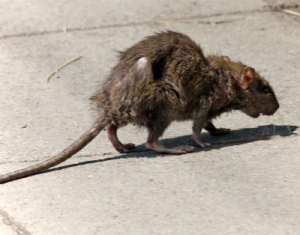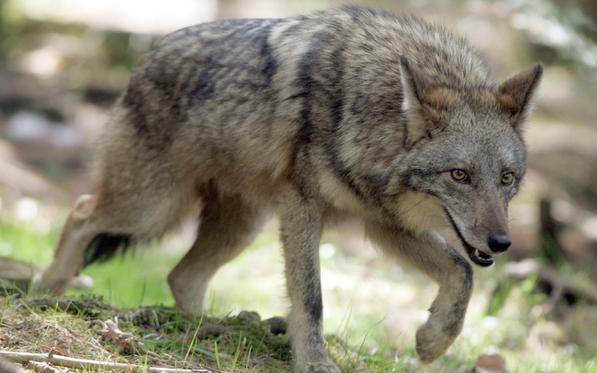 Preppers tend to have a pretty good grasp of the future, or at least better than the average person. Even those who aren’t very good at prognostication, are at least giving it a shot. I can’t say the same for society at large.
Preppers tend to have a pretty good grasp of the future, or at least better than the average person. Even those who aren’t very good at prognostication, are at least giving it a shot. I can’t say the same for society at large.
As we prepare for the systemic collapse of our society, we should ask ourselves an important question. Are we prepping to survive tomorrow, or are we preparing the world for our children? Because the world we hand off to the next generation is going to be wildly different than the present, and I’m not just talking about technology.
I’d like to talk about some of the changes in our natural environment that are going to occur over the next 50-100 years. Specifically with some of the animals that many of us have to live with, for better or for worst. In some cases, these animals are going to experience an impressive population explosion over the years to come. In other cases, the physical and mental attributes of these animals is going to change in significant ways. Take one last look around you, because the critters you and your ancestors had to deal with may look quite a bit different for your children.
Larger Varieties of Rats
It’s not a secret that wherever humans go, many animals have trouble surviving. Over the past 500 years, a total of 320 vertebrate species have gone extinct at the hands of humans. Many of these were the top predators in their environment, so it often leaves a void in the food chain. The best example of what can happen when apex predators are removed, would probable be the explosion of the deer population after humans pushed out the wolves from the United States (we’ll get to that in a moment).
However, one species has proven to be particularly difficult to extinguish. Wherever humans go, the rat population increases alongside it. Some researchers believe that rats may someday take over the empty spaces in the food chain that were left behind by other marginalized predators. Since they are so adept at living with humans, and since humans are so effective at fighting other predators, the rats are in a unique position. Whenever a species gets knocked out the picture, the rats are always there to take over the abundance of food that is left over.
Simply put, this is going to result in larger, more predatory rats. Genetically speaking, they’re certainly capable of enormous growth, and have some impressive mental faculties. We may need to invent a better rat trap after all.
Feral Dogs
As the human population of Detroit has been hollowed out, they have been replaced by a horde of 50,000 feral dogs that roam the streets and frequently attack the remaining residents. After a collapse, you can expect the feral dog population to rise wherever humans leave, as fleeing residents leave their pets behind. You can also expect these dogs to develop a greater intelligence than their domesticated cousins, as we’ve seen with the stray dogs of Moscow. There, the feral dogs have lost their friendliness towards humans, and have reverted back to many of their wolf-like traits.
The only exception being the dogs that have become expert beggars. They’ve learned to spot which humans are the most likely to give out food, and have actually learned how to ride the Moscow subway by memorizing the sounds that are announced on the loudspeaker.
After a collapse, the dogs will proliferate the most in urban areas, since as a species, they’ve adapted to living with humans more than other creature (except rats I suppose). They could easily expand into rural areas, forming the same kinds of wolf packs that threatened the first European settlers of North America. Their vast numbers, familiarity with humans, and intelligence will make them significant adversaries for humans. However, their dominance may be short lived.
Coywolves
As the first European settlers took over the American continent, they centered a lot of their agricultural activity on herding domesticated animals. These were easy pickings for wolves, so over the years the wolf population was pretty much routed from the lower 48. By the 1970’s the only wolves left in North America were residing in the lightly populated forests of Canada. There they ran into some of their coyote cousins, who were also being pushed out of rural areas.
As time went on the two species began to intermingle, resulting in a hybrid animal that carries some of the best traits between the two. In total they are about 1/4 wolf, 2/3 coyote, with the remaining fraction being filled with feral dog genes. The wolf traits allows them to form larger packs than coyotes, while also being strong enough to take down heavier prey. The coyote and dog traits allow them to adapt to human environments like city’s and suburbs. So…
…Coming soon to a city near you.
Silent Rattlesnakes
What was originally considered to be nothing more than an anecdotal story, may in fact be true. As time goes on, rattlesnakes aren’t actually using their rattles as much. Humans typically kill any rattlesnake they find, and understandably so. However, the snakes that don’t rattle are often never seen, so they are left alone. This natural selection has bred snakes to not use their warning signal, making them significantly more dangerous. Last year an NPR report from South Dakota discovered that an increasing number of snakes are found to be born with defective tails that can’t rattle. It’s a possible genetic mutation that has become an asset to the snakes, making them harder for humans to find, and easier to stumble upon on accident.
Feral Pigs
Between the feral pigs that have escaped into the wild, the wild boars that were introduced into American hunting grounds from Europe, and the massive hybrids they sometimes create, North America has a serious pig problem. With no natural predators to cull their numbers, and hunters who keep introducing them to new hunting grounds (where they promptly escape), I wager their numbers have grown more than any other invasive species in North America. Over the past twenty years alone, the size of their territorial range has nearly doubled, especially in Texas and California.
I would guess that more than any other animal, preppers are going to have the most problems with these pigs in the future. They have a habit of destroying gardens, they’re unafraid of humans, reproduce like you wouldn’t believe, and carry a vast array of infectious diseases. As preppers retreat to the rural areas in large numbers, they’re going to butt heads with these nasty creatures. You’re pretty much guaranteed to encounter them after a collapse no matter where you live, because over the past few decades, they have spread to nearly every U.S. state.
If there’s one thing we should take from all of this, it’s that the more things change the more they stay the same. The one factor all of these animals have in common, is that their renewed status was caused by human activity. No matter how drastically our environment changes, mother nature is a fickle beast that will always prove to be our most challenging adversary, second only to our fellow humans. Fortunately, preppers have a healthy awareness and respect for the danger posed by both of them.
Image Links:
http://thechronicleherald.ca/thenovascotian/924160-coyotes-with-some-wolf-on-the-side




Mother nature is not the enemy. That sort of thinking is much the cause of our imbalanced systems. Nature provides everything we need to survive. If you work with her as a partner rather than an “adversary” to be conquered, she is very generous. You can’t fight something that is intrinsic to your own being. You won’t win, and you won’t thrive.